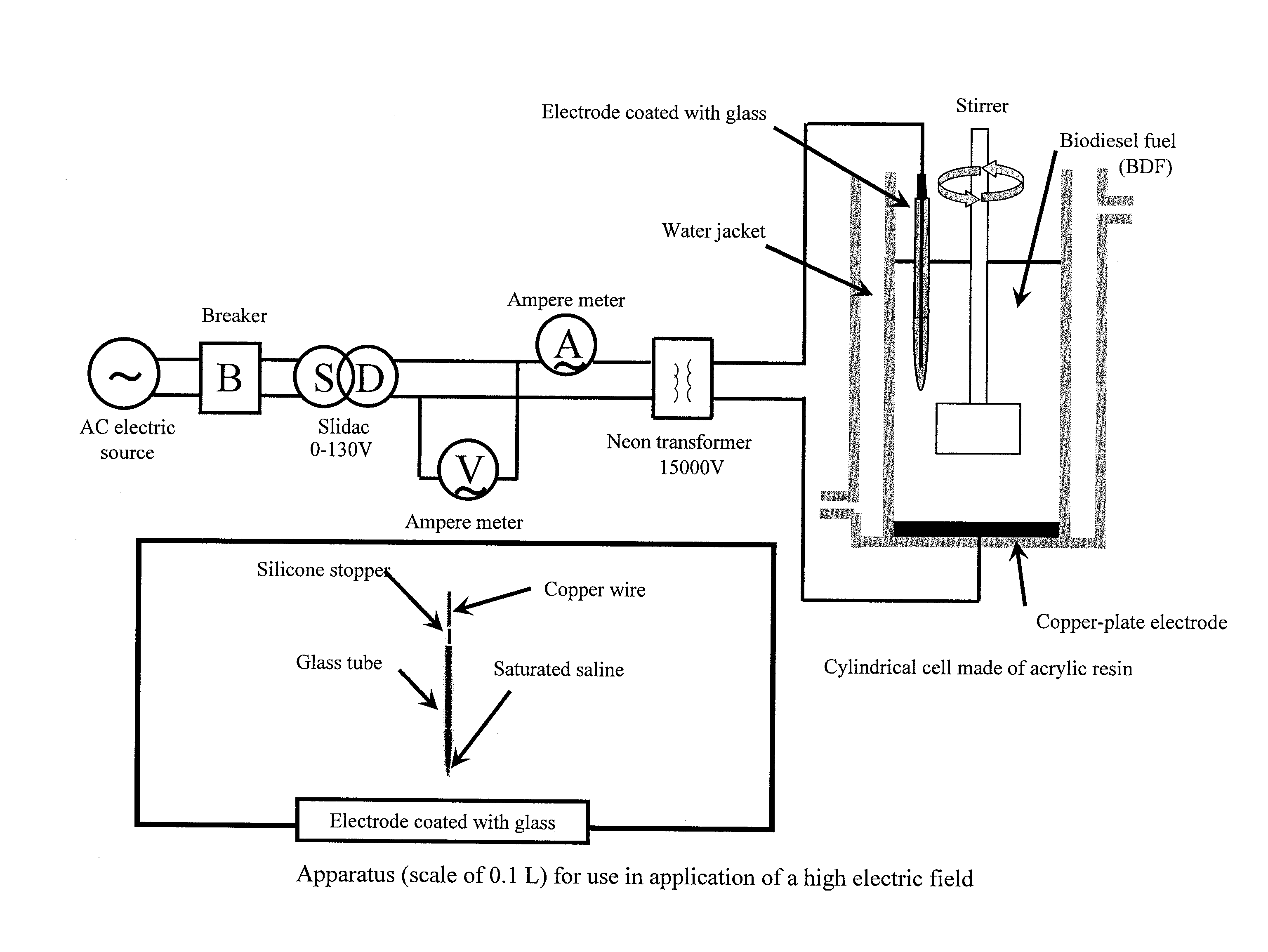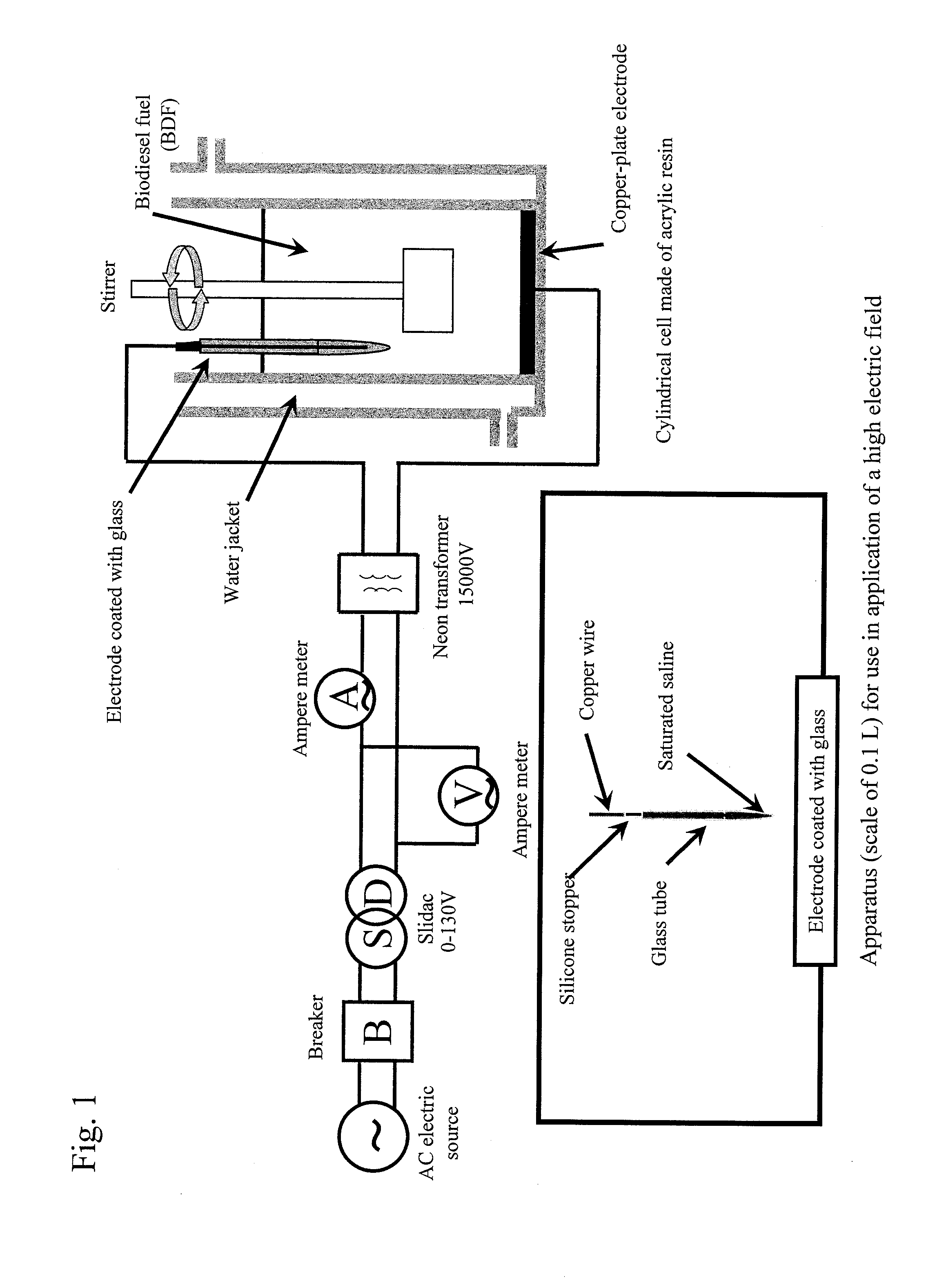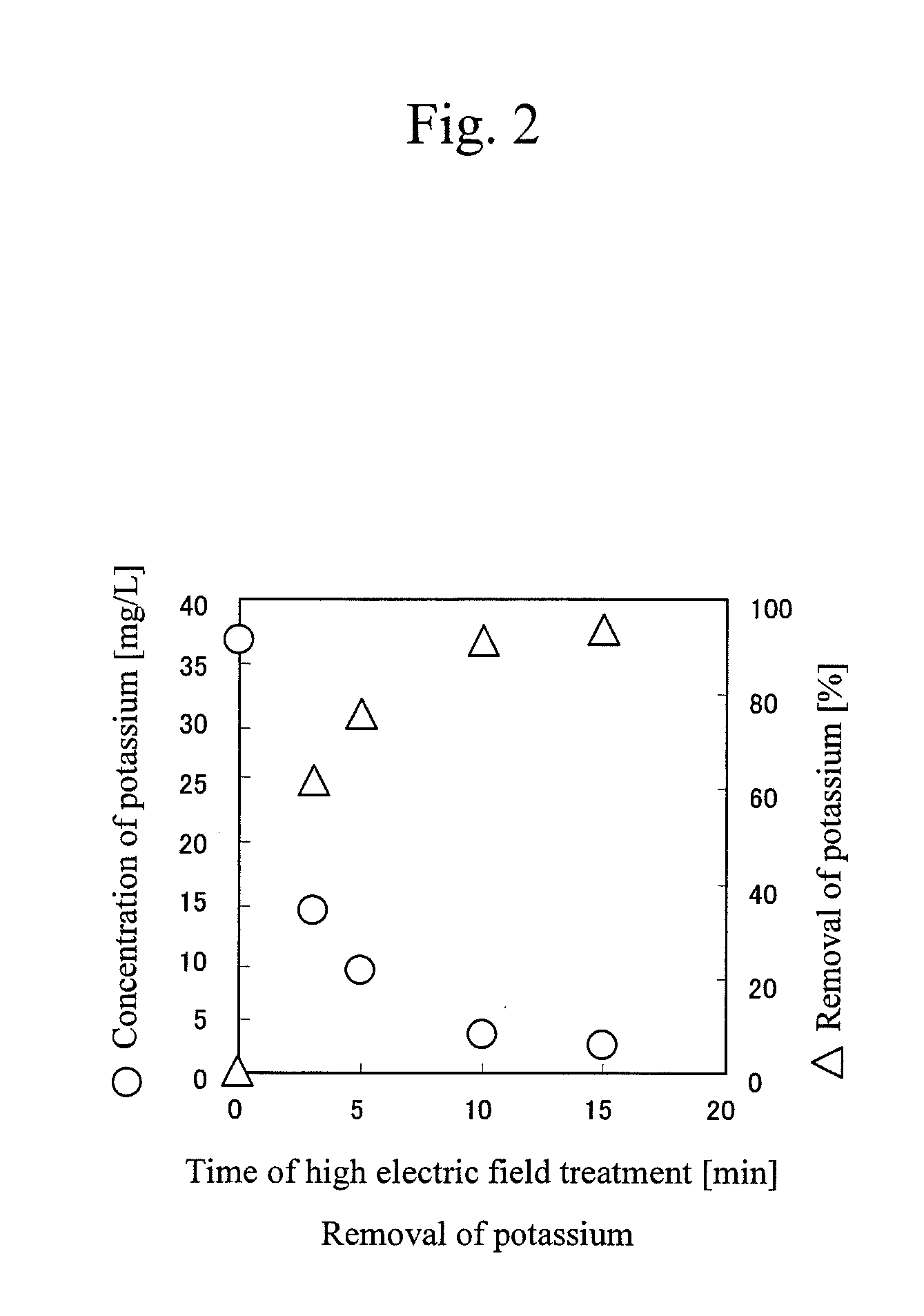Method for purifying biodiesel fuel
a biodiesel fuel and fuel technology, applied in the direction of hydrocarbon oil dewatering/demulsification, separation processes, hydrocarbon oil dewatering/demulsification, etc., can solve the problems of large energy consumption, unreacted methanol in generated ester compounds, and high cost of wastewater treatment, so as to prevent or greatly reduce the generation of wastewater
- Summary
- Abstract
- Description
- Claims
- Application Information
AI Technical Summary
Benefits of technology
Problems solved by technology
Method used
Image
Examples
example 1
[0072]A crude biodiesel fuel (methanol: 3100 mg / L, potassium: 37 mg / L, free glycerin: 284 mg / L), which was produced from fresh oil (rapeseed oil) by a transesterification method (using methanol and potassium hydroxide), or a crude biodiesel fuel (methanol: 160 mg / L, potassium: 114 mg / L, free glycerin: 384 mg / L), which was produced from waste edible oil (salad oil) by a transesterification method (using methanol and potassium hydroxide), was placed in a cylindrical container made of an acrylic resin. A high electric field was applied by using the apparatus shown in FIG. 1. The intensity of the electric field was varied within the range of 0.16 to 2.5 kV / cm. As a result, when an electric field as high as 2.5 kV / cm was applied to the crude biodiesel fuel produced from the fresh oil, potassium was removed with the passage of time and reached a final concentration of 2.3 mg / L, which met the EU standard: 5.0 mg / L (FIG. 2) 15 minutes after initiation of the application. Also removal effect...
example 2
[0074]A crude biodiesel fuel (methanol: 2620 mg / L, potassium: 114 mg / L, and free glycerin: 1320 mg / L), which was produced from waste edible oil (salad oil) by a transesterification method (using methanol and potassium hydroxide), and pure water were placed in a glass bottle in a total amount of 100 mL. The bottle was shaken to form emulsion. Immediately upon emulsion formation, the emulsion was transferred to a cylindrical container formed of an acrylic resin and high electric field was applied in the same manner as in Example 1.
[0075]When the ratio of water addition was varied within the range of 0 to 1.0 v / v %, the final concentration and removal of methanol and free glycerin are shown in FIGS. 4 and 5, respectively. Removal effects of methanol and free glycerin were confirmed. Furthermore, it was found that the removal increases as the ratio of water addition increases. A removal of free glycerin was 94.1% at a water addition of 1.0 v / v %.
[0076]A crude biodiesel fuel (methanol: 1...
example 3
[0077]First, 97 mL of a crude biodiesel fuel (methanol: 272 mg / L, potassium: 197 mg / L, and free glycerin: 574 mg / L), which was produced from waste edible oil (salad oil) by a transesterification method (using methanol and potassium hydroxide), and 3 mL of pure water were placed in a glass bottle and the bottle was shaken to form emulsion. Immediately upon emulsion formation, the emulsion was transferred to a cylindrical container formed of an acrylic resin. An electric field having an intensity of 2.5 kV / cm was applied for one hour in the same manner as in Example 1 and then allowed to stand still for 12 hours. The concentrations of methanol, potassium and free glycerin in the fuel phase were determined.
[0078]As a result, as shown in FIGS. 9 to 11, the removal of each of the impurities was high at one-hour application of a high electric field. The removal of methanol, potassium and free glycerin reached 63.6%, 70.2% and 83.4%, respectively.
[0079]The removal of impurities was further...
PUM
| Property | Measurement | Unit |
|---|---|---|
| electric field | aaaaa | aaaaa |
| electric field | aaaaa | aaaaa |
| temperature | aaaaa | aaaaa |
Abstract
Description
Claims
Application Information
 Login to View More
Login to View More - R&D
- Intellectual Property
- Life Sciences
- Materials
- Tech Scout
- Unparalleled Data Quality
- Higher Quality Content
- 60% Fewer Hallucinations
Browse by: Latest US Patents, China's latest patents, Technical Efficacy Thesaurus, Application Domain, Technology Topic, Popular Technical Reports.
© 2025 PatSnap. All rights reserved.Legal|Privacy policy|Modern Slavery Act Transparency Statement|Sitemap|About US| Contact US: help@patsnap.com



